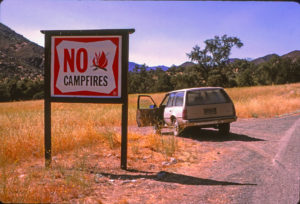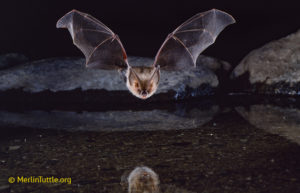ith the roar of traffic zooming ahead on the highway and the incessant chatter of birds behind, Dave Riensche slams the door of his field truck shut and gazes out at the half-acre, manmade island off the Hayward Regional Shoreline that hosts the densest population of endangered California least terns on the West Coast.
Riensche, a wildlife biologist with East Bay Regional Park District, studies these birds, a subspecies of the least tern found only along the California coast and northern Mexico’s Baja California. The birds have been listed as federally endangered since 1970, and have had annual population surveys conducted since 1974. In that first year only 582 breeding pairs were found. Now the number has risen to more than 4,500 pairs in recent years as a result of protective measures such as fencing and predator control.
Riensche guides us to a spot to view the colony floating just 35 metres away. With binoculars and spotting scope in hand, we saw many tern parents sitting on nests, which is a testament to the prolific number of eggs being laid this year. Says Riensche, “It’s like you’re at a movie theater and there’s popcorn – you’d walk by an egg and the chick would just poke through, boom, boom, boom.”
The California least tern, with a jet black head, gray body, and erect tail feathers, is a rare species in the Bay Area that’s more common in southern California and the Baja Peninsula. Least terns winter off of South America’s Pacific coast, then return to the north to nest on the water in both coastal and inland areas. The Hayward colony, and a companion colony in Alameda, represent – for now – the farthest northern extent of the bird’s breeding range.
Which raises, for Riensche, a question: “The majority of California least terns are in southern California, so how come the two northern colonies in Alameda and Hayward are doing so well?”
And a possibly related question: how long can they keep doing well?
The answer to this question remains ambiguous. Audubon’s climate report forecasts an 82 percent decline in current summer range by 2080, but it also notes that creative wildlife managers and the tern’s natural adaptability could keep the bird around. For now the terns are thriving at the northern limits of their range, Alameda and Hayward. Their success lies in the fledgling per pair ratios, which are high at these two sites. There are more total nesting spots along the Southern California coast, but the ratio is nowhere near the same.
For Riensche and Northern California, at least, there are some reasons for optimism: nesting colonies like the ones in Alameda and Hayward are well protected from human disturbance and development, two of the main causes of the tern’s decline so far. The Hayward colony’s floating island is closed to the public. Riensche has developed a suite of interesting tactics for keeping predators away, like traps, and speakers that play least tern mating calls, a shrill whistling kideek kideek.
That just leaves the slower-building – but less obviously solvable — problem of sea level rise. “Everything is subject to sea level rise,” Riensche says. “If sea level rises, the island is in major peril.”
There already is erosion of 1-2 feet per year on the bay side of the island, he says. But for now, the Hayward colony has reached its carrying capacity every year for the past three years – although in 2012, when Alameda’s colony had a significant decrease in nesting success, the Hayward colony was able to absorb an additional 100 birds.
The climate threat is also, perhaps, an opportunity. As the state gets warmer, new territory might open up. Terns seem to be moving farther north into California, perhaps to escape predation and to find more inland nesting habitat; terns have already been sighted in Sacramento.
And Riensche has his own plans for the Hayward island: rip-rap, better predator fencing, dredging a moat so foxes and raccoons can’t get at the young birds. There is also the danger of chicks falling into the water and drowning due to nesting too close to the edge as well as rising sea levels.
“We want to keep these birds surviving, no matter what,” Riensche says.





